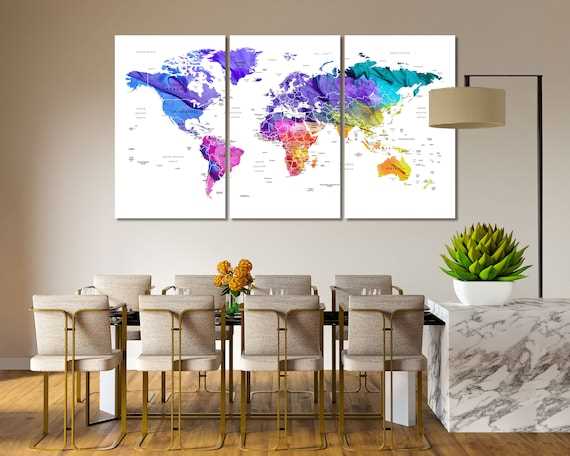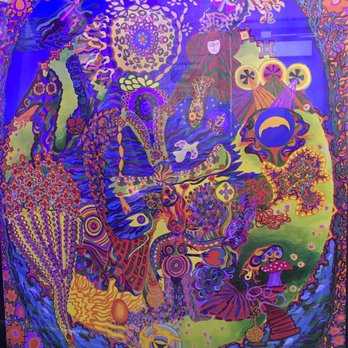If you are interested in mural painting on canvas, it is important to have a detailed plan before you begin. Mural painting can transform a plain wall into a work of art, but it requires careful planning and execution. In this article, we will discuss the steps involved in creating a mural painting on canvas and provide you with a comprehensive plan to guide you through the process.
Firstly, it is important to choose the right canvas for your mural painting. Consider the size and dimensions of the wall where the mural will be installed to determine the size of the canvas. A larger canvas can allow for more intricate and detailed designs, while a smaller canvas may be more suitable for simpler designs or limited space. Additionally, consider the type of paint you will be using and choose a canvas that is compatible with the medium.
Next, sketch out your design on paper before transferring it onto the canvas. This will allow you to experiment with different compositions and make any necessary adjustments before committing to the canvas. Once you are satisfied with your design, use a pencil to lightly sketch the outline onto the canvas. This will serve as a guide for the painting process.
When it comes to the actual painting, start by blocking in the larger areas of your design with a base color. This will help establish the overall composition and provide a foundation for the rest of the painting. Then, gradually build up the layers of paint, working from background to foreground. Use a combination of different brushes and techniques to achieve different textures and effects.
Finally, add the finishing touches to your mural painting on canvas. This could include highlighting certain areas, adding depth and shadows, or adding details and accents. Step back periodically to evaluate your progress and make any necessary adjustments. Once you are satisfied with your mural painting, allow it to dry completely before installing it on the wall.
In the world of art, mural painting on canvas is a popular and impactful form of expression. It allows artists to create large-scale artworks that can transform the look and feel of any space.
Unlike traditional mural painting, which is typically done directly on walls or other surfaces, mural painting on canvas offers more flexibility and portability. Artists can create their masterpieces in the comfort of their own studios and then transport and install them at their desired locations.
Before starting the mural painting process, artists often create a detailed plan or sketch of their desired artwork. This helps them visualize the final product and make any necessary adjustments before beginning the actual painting. It also allows them to communicate their vision to clients or collaborators, ensuring that everyone is on the same page.
Benefits of Mural Painting on Canvas
There are several advantages to choosing mural painting on canvas over other forms of mural painting. Firstly, it allows for more flexibility and experimentation. Artists can easily make changes or corrections to their artwork without damaging the underlying surface.
Secondly, mural painting on canvas offers greater longevity. The artwork can be preserved and protected, allowing it to last for many years without any significant fading or deterioration. This is especially important for murals that are installed outdoors and exposed to the elements.
Lastly, mural painting on canvas enables artists to showcase their work in a variety of settings. It can be displayed in art galleries, museums, public spaces, or even private residences. The portability of canvas murals also means that they can be easily transported and exhibited in different locations.
History of Mural Painting
Mural painting is an ancient form of art that has been practiced for thousands of years. The history of mural painting can be traced back to prehistoric times, where early humans used natural pigments to create images on cave walls. These cave paintings serve as a fascinating glimpse into the lives of our distant ancestors and their relationship with the world around them.
As civilizations developed, so did the art of mural painting. Ancient Egyptians used murals to decorate the walls of tombs and temples, depicting scenes from mythology and daily life. The vibrant colors and intricate details of these murals give us insight into the beliefs and traditions of this ancient civilization.
In ancient Greece and Rome, mural painting continued to flourish. The walls of public and private buildings were adorned with colorful images, telling stories and honoring gods and heroes. During the Renaissance, mural painting reached its peak, with famous artists such as Michelangelo and Leonardo da Vinci creating breathtaking frescoes on the ceilings and walls of churches and palaces.
Throughout history, mural painting has been used to communicate ideas, preserve cultural heritage, and beautify public spaces. In modern times, mural painting has evolved into a form of street art, with artists using walls and buildings as their canvas to express their creativity.
Today, mural painting continues to be a popular and influential art form, with artists around the world creating stunning works that inspire and provoke thought. From ancient cave walls to city streets, the history of mural painting is a testament to the power of art to connect people and transcend time.
Defining Mural Painting on Canvas

Mural painting on canvas is a form of artistic expression that involves creating large-scale paintings on canvas surfaces. It is a technique that has been used for centuries to decorate public spaces, such as walls and ceilings, with intricate and often narrative artwork.
This type of painting is commonly seen in museums, galleries, and public buildings, as well as in private homes. The canvas serves as a versatile medium for mural painting, allowing artists to create detailed and vibrant artwork that can be easily transported and displayed.
Mural painting on canvas typically involves carefully planning and sketching the design before transferring it onto the canvas surface. Artists may use a variety of techniques, such as stenciling, freehand painting, or a combination of both, to bring their visions to life.
The subject matter of mural paintings on canvas can vary widely, ranging from historical or mythological scenes to abstract or contemporary designs. Artists often use this medium to communicate a message or tell a story, making mural painting on canvas a powerful and impactful form of art.
In addition to its artistic value, mural painting on canvas also serves practical purposes. It can be used to enhance the aesthetics of a space, add visual interest to a room, or showcase local culture and heritage. It can also serve as a means of cultural expression, allowing artists to depict their personal experiences, beliefs, or perspectives.
Overall, mural painting on canvas is a dynamic and expressive art form that combines creativity, storytelling, and technical skill. It offers artists a unique canvas to create monumental and visually stunning works of art that can inspire and captivate viewers for generations to come.
Benefits of Mural Painting
Mural painting is a form of art that offers numerous benefits to both artists and viewers. Here are some of the benefits of mural painting:
1. Beautifies the space: One of the major benefits of mural painting is that it adds beauty and enhances the aesthetic appeal of the space. Whether it’s a public area, a residential building, or an office, mural paintings can transform the environment and create a visually pleasing atmosphere.
2. Tells a story: Mural paintings have the power to communicate stories and messages. Artists can use their murals to convey important social, cultural, or political messages. These artworks can act as visual narratives, invoking emotions, and sparking meaningful conversations.
3. Reflects the community or culture: Mural paintings often reflect the history, traditions, and culture of a community or region. They serve as a way to preserve and celebrate the heritage of a place, promoting a sense of pride and identity among the locals.
4. Transforms public spaces: Mural paintings have the ability to transform ordinary public spaces into vibrant and engaging areas. They can revitalize neighborhoods, make public spaces more inviting, and promote community engagement and interaction.
5. Inspires creativity: Mural painting is a highly creative art form that allows artists to think outside the box and explore their imagination. It provides a platform for artists to experiment with various styles, techniques, and themes, pushing their creative boundaries.
6. Long-lasting art: Unlike other forms of art, mural paintings are long-lasting and durable. They can withstand various weather conditions and remain intact for years, providing enjoyment to future generations.
7. Boosts economic growth: Mural paintings are often used as a tool for urban regeneration and revitalization. They can attract tourists, boost local businesses, and contribute to the economic growth of a community.
8. Creates a sense of ownership: Mural paintings are often created with the involvement and input of the local community. This participatory process fosters a sense of ownership and pride among the residents, creating a stronger bond within the community.
The Process of Creating a Mural Painting
Creating a mural painting involves several steps that require careful planning and execution. Here is a detailed look at the process:
1. Conceptualization
The first step in creating a mural painting is to come up with a concept or theme. This is an important decision that will influence the overall design and message of the artwork. It could be inspired by local history, culture, or nature, or it could be a reflection of the artist’s personal style.
2. Sketching and Designing
Once the concept is finalized, the next step is to sketch out the design on paper. This helps the artist visualize the composition and make any necessary adjustments. After the sketch is complete, it can be transferred onto the canvas using tracing paper or a grid system.
3. Surface Preparation
Before starting the actual painting, the canvas needs to be properly prepared. This involves cleaning the surface and applying a layer of primer to ensure better adhesion of the paint. It is important to use a high-quality primer that is suitable for the type of paint being used.
4. Painting Technique
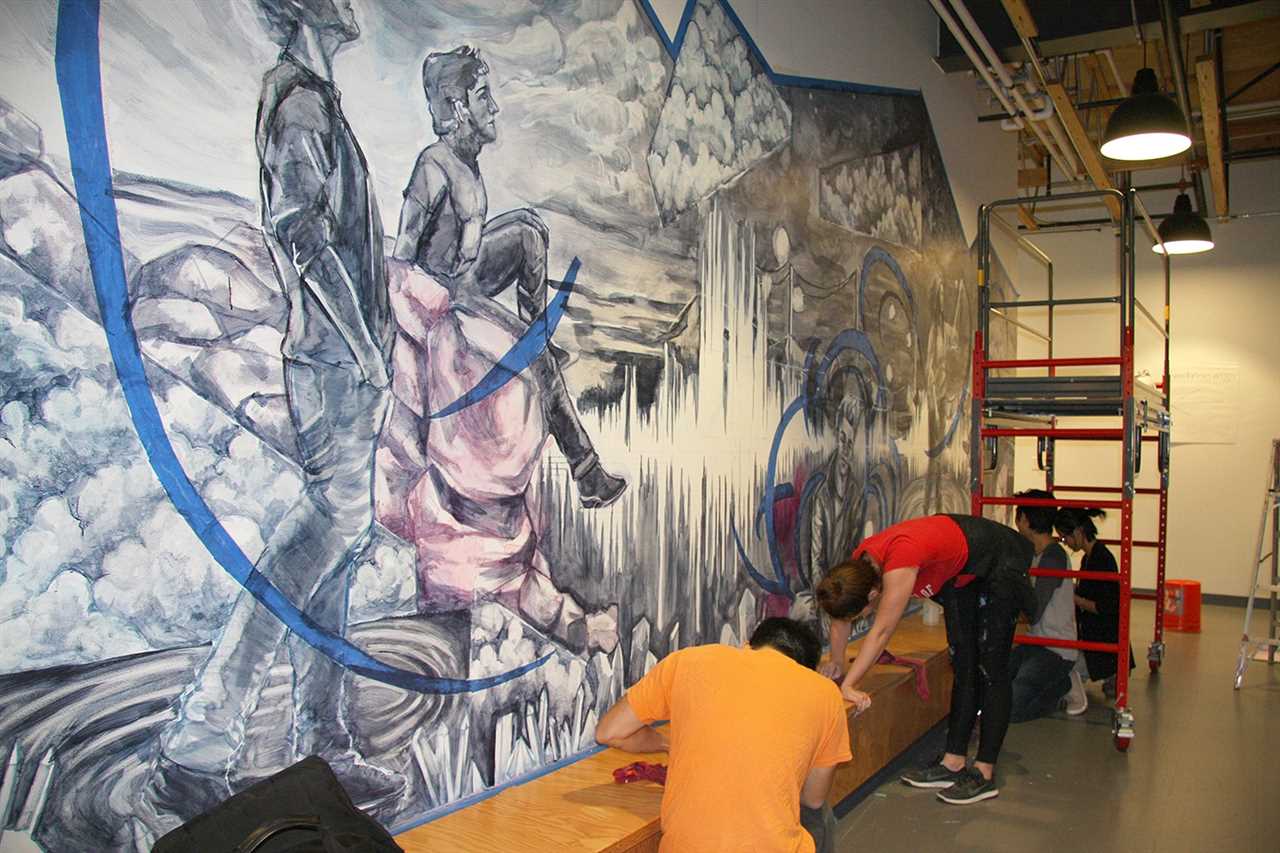
There are different painting techniques that can be used for creating a mural. The artist may choose to use brushes, rollers, or even airbrushing, depending on the desired effect. It is important to plan out the painting technique based on the design and the artist’s preferred style.
5. Layering and Detailing
Creating depth and adding details to the mural is an important part of the process. This involves layering different colors and adding intricate details to bring the artwork to life. The artist may use different brushes and techniques to achieve the desired result.
6. Sealing and Protecting
Once the painting is complete, it is important to seal and protect the mural to ensure its longevity. This involves applying a clear coat or varnish to protect the paint from fading and damage caused by UV rays, moisture, and other environmental factors.
7. Installation and Display

After the mural is sealed and dry, it can be installed and displayed in its designated location. This may involve mounting the canvas on a wall, attaching it to a frame, or securing it in any other appropriate manner. The artist should make sure to carefully follow the installation instructions and ensure the mural is displayed in a way that enhances its visual impact.
Creating a mural painting is a complex and time-consuming process that requires skill, creativity, and attention to detail. By following a detailed plan and considering the various aspects of the process, the artist can create a stunning work of art that will captivate viewers and contribute to the aesthetic appeal of its surroundings.
Tools and Materials Required
Before starting a mural painting on canvas, it is essential to gather all the necessary tools and materials. Having the right supplies will ensure that the process goes smoothly and the end result is of high quality.
Here are the tools and materials required for mural painting:
Brushes:
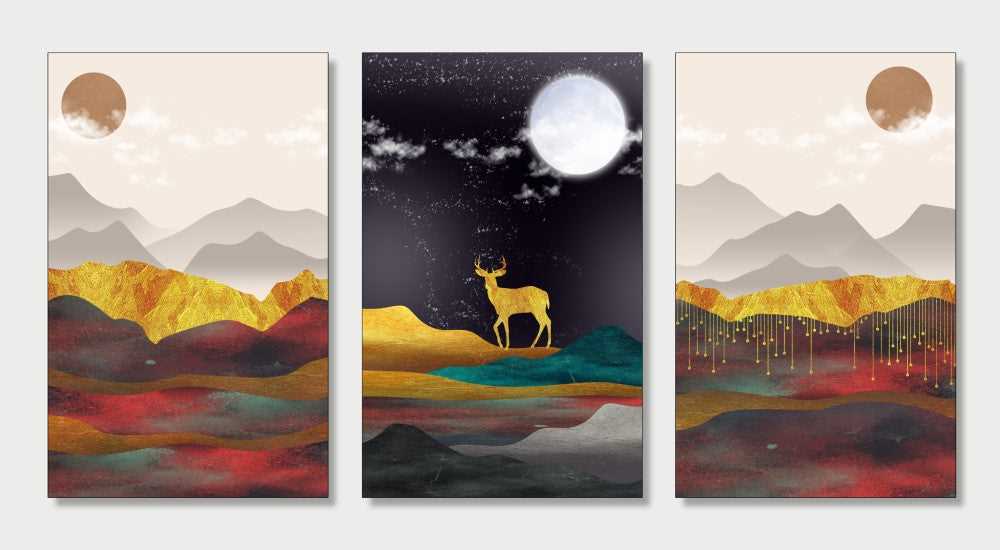
Invest in quality brushes of different sizes to achieve different strokes and effects. Flat brushes are ideal for covering large areas, while round brushes are great for adding details.
Paint:
Choose acrylic paints as they are versatile, long-lasting, and easy to work with. Ensure you have a variety of colors to bring your mural to life.
Palette:
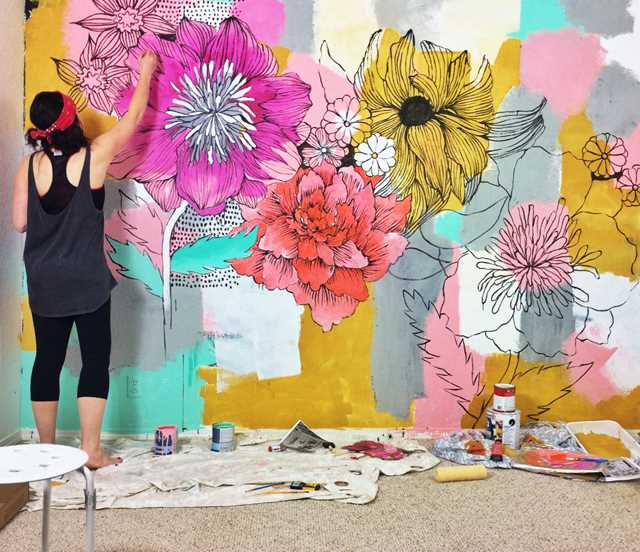
A palette is required to mix and blend colors. You can use a traditional wooden palette or opt for a disposable one for convenience.
Easel:
An easel holds the canvas in place and allows for easy painting. It keeps the canvas at a comfortable height and angle, reducing strain on your back and neck.
Canvas:
For mural painting, select a canvas that is sturdy and suitable for acrylic paints. The size of the canvas depends on the scale of the mural you plan to create.
Sketching tools:
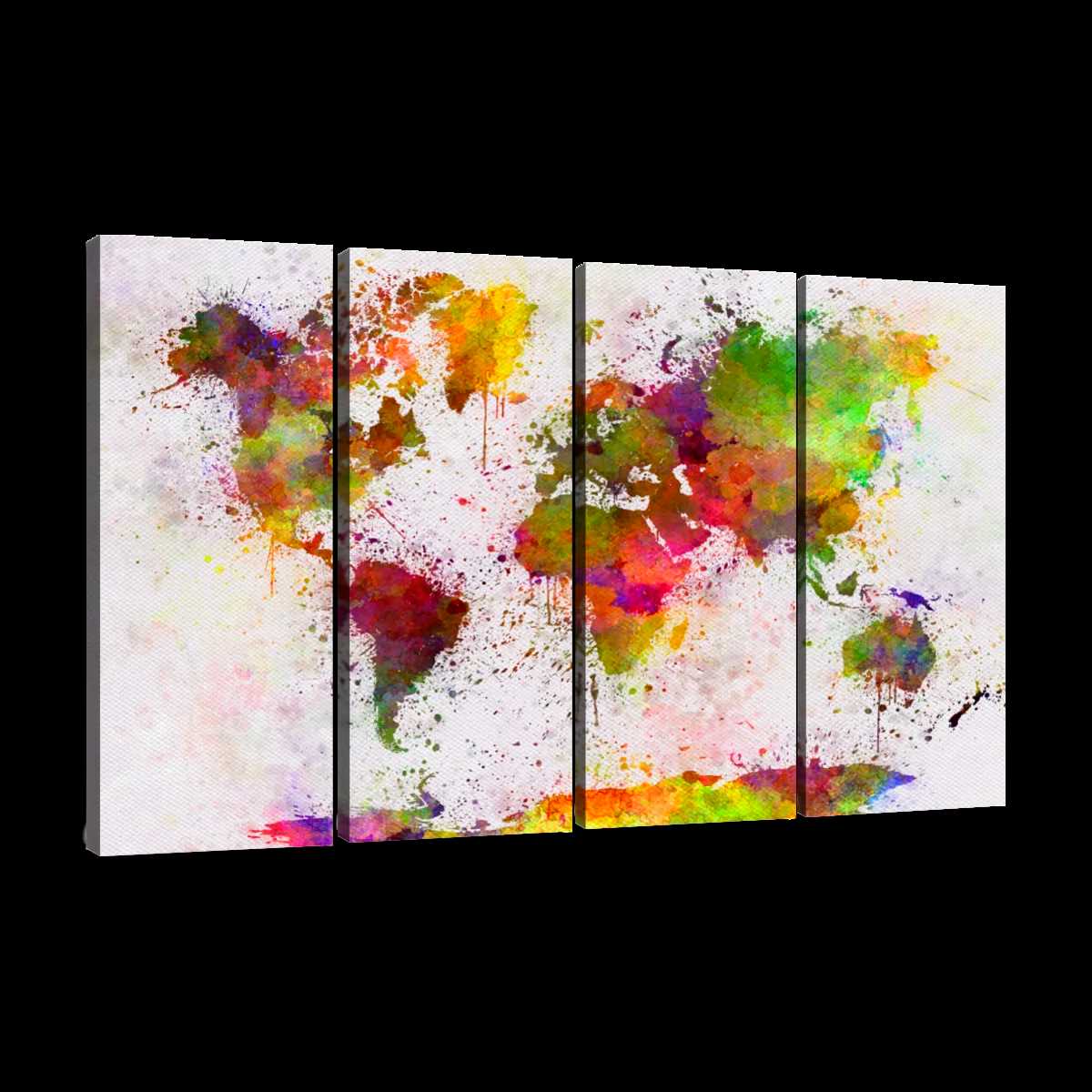
Use pencils, pens, or markers to sketch your design on the canvas before painting. This provides a guideline and helps maintain proportion and composition.
Palette knife:
A palette knife is useful for mixing paints, creating texture, and applying thick layers of paint. It gives your mural a unique and three-dimensional effect.
Masking tape:
Masking tape helps in creating clean and straight lines. It can be used to mark boundaries or create sharp edges between different sections of the mural.
Drop cloth or newspapers:
Protect your working area by placing a drop cloth or newspapers on the floor. This will catch any spills or drips and prevent damage to your surroundings.
Water and rags:
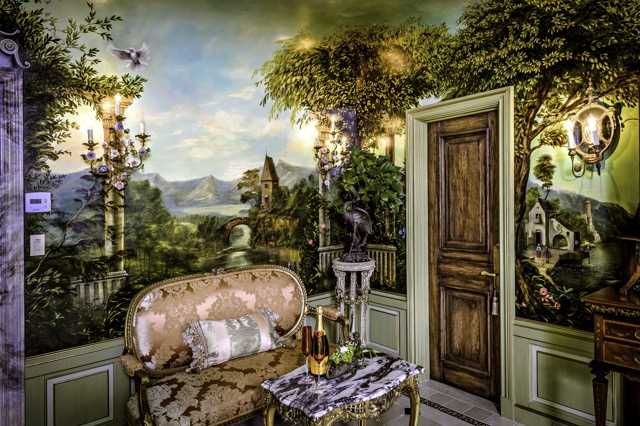
Keep a container of water and rags nearby to clean brushes, wipe off excess paint, and make corrections. This will ensure that your colors remain vibrant and separate.
Preparing your tools and materials before starting will save time and make the mural painting process more enjoyable. So, gather everything you need and get ready to bring your artistic vision to life!
Choosing a Design

When it comes to mural painting on canvas, choosing the right design is crucial. The design you choose will be the focal point of the entire piece, so it is important to think carefully about what you want to convey with your artwork.
There are several factors to consider when selecting a design for your mural. First, think about the theme or message that you want to communicate. Are you creating a mural for a specific space or event? Do you want your artwork to tell a story or evoke certain emotions? These questions will help guide your design choices.
Next, consider the size and shape of the canvas you will be working on. This will determine the scale and composition of your design. You want to make sure that the design fits well within the canvas and creates a visually pleasing arrangement.
It can also be helpful to gather inspiration from other sources. Look for images, photographs, or artwork that resonates with you and your vision. This can help spark new ideas and provide a starting point for your own design.
Once you have a few design ideas in mind, it can be helpful to create rough sketches or mock-ups. This will give you a better sense of how the design will look on the canvas and allow you to make any necessary adjustments or changes.
Finally, don’t be afraid to experiment and take risks with your design. Mural painting on canvas is a creative process, and sometimes the most unexpected designs can turn out to be the most stunning.
Remember, choosing a design for your mural is a personal decision. It should reflect your own style, interests, and artistic vision. Take your time, trust your instincts, and create something that you will be proud to display.
Color Selection

When planning a mural painting on canvas, one of the most important decisions to make is the color selection. The colors you choose will set the mood for the artwork and have a significant impact on its overall appearance and impact. Therefore, it is crucial to carefully consider the color palette and how it aligns with your artistic vision.
Analyzing the Theme
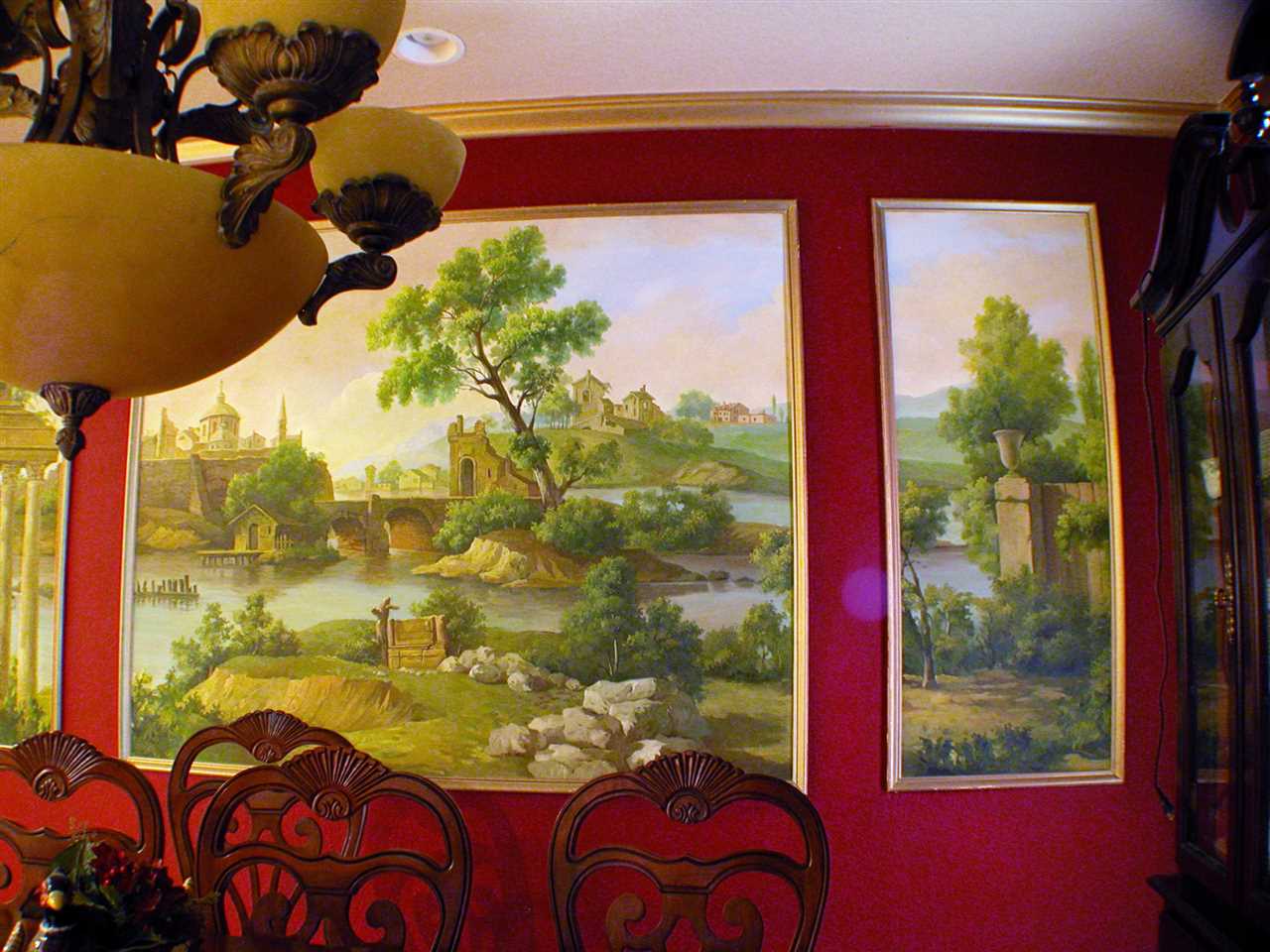
Before selecting colors, it is essential to analyze the theme and concept of your mural. What do you want to express through your artwork? Is there a specific mood or atmosphere you want to create? Consider the emotions and message you wish to convey, as this will help guide your color choices.
For example, if your mural depicts a serene natural landscape, you may opt for soft and calming colors such as shades of green, blue, and earth tones. On the other hand, if your mural represents a vibrant cityscape, you may choose bright and energetic colors like red, yellow, and orange to convey a lively and dynamic atmosphere.
Creating Harmony
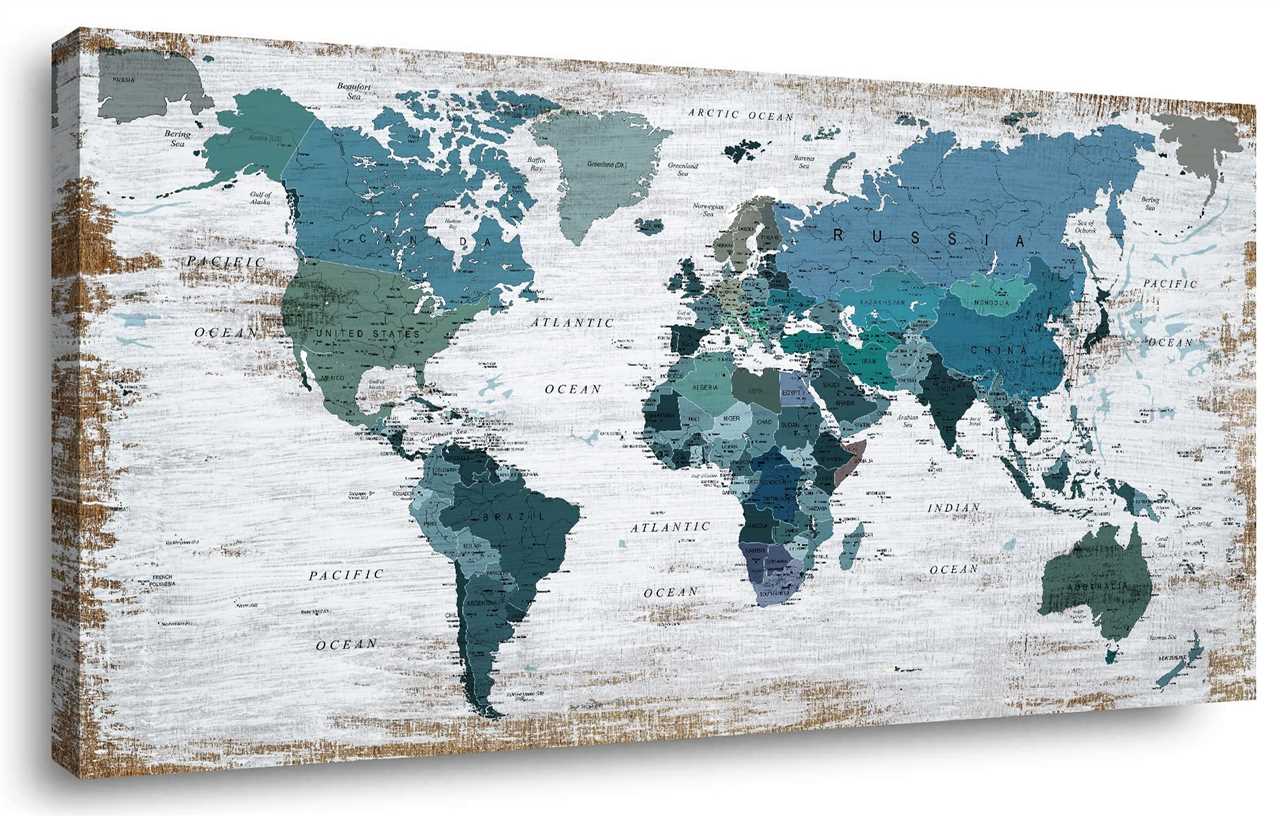
Another option is to use complementary colors, which are opposite each other on the color wheel, to create contrast and make certain elements stand out. However, be cautious not to overuse complementary colors as it can result in a jarring and overwhelming composition.
| Color Harmony Technique | Examples |
|---|---|
| Analogous Colors | Blue, green, turquoise |
| Complementary Colors | Red and green, purple and yellow |
Experimenting with different color schemes through sketches or digital mockups can help you visualize how different colors work together and make it easier to make an informed decision.
Techniques and Styles in Mural Painting
Mural painting is a vibrant and expressive art form that allows artists to create large-scale works of art on walls or other surfaces. There are various techniques and styles that artists employ when working on a mural painting.
Fresco
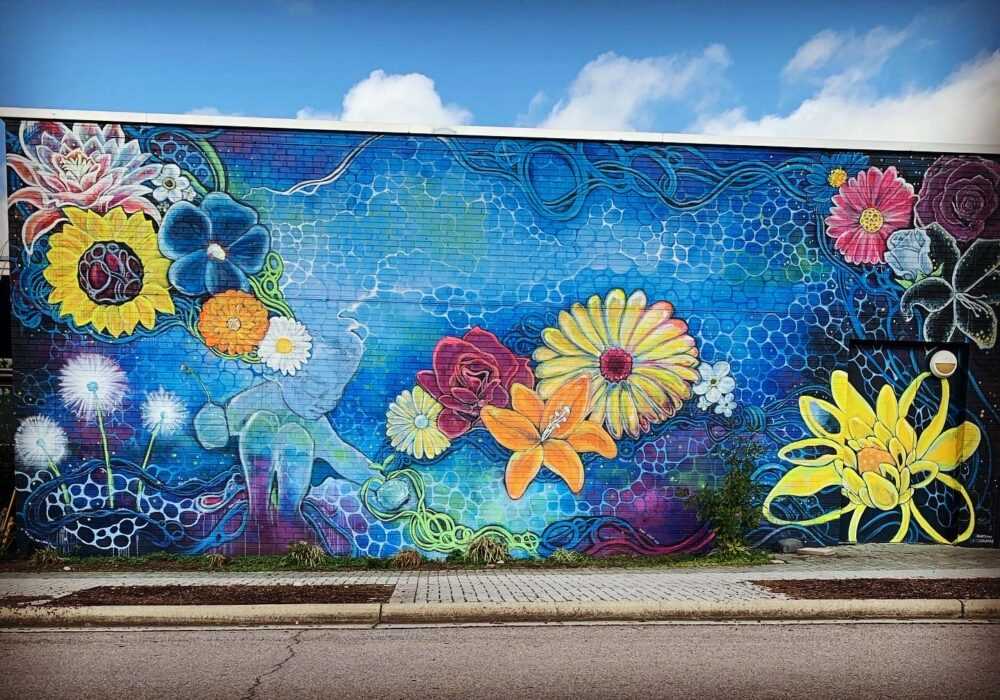
Fresco is a technique that dates back to ancient times and involves painting directly onto wet plaster. This technique requires careful planning and execution, as the artist must work quickly before the plaster dries. The colors used in fresco paintings are made from pigments mixed with water, which then seep into the wet plaster to create a lasting bond.
Mosaic
Mosaic mural painting involves the use of small pieces of colored glass, stone, or other materials to create an intricate design. Artists carefully arrange these pieces to form an image, which is then affixed to a surface using an adhesive. Mosaic murals can be seen in public spaces, such as subway stations or public parks, where they add a touch of beauty and sophistication to the environment.
Realism
Realism is a style of mural painting that aims to capture the subject matter in a lifelike and detailed manner. Artists who work in this style pay close attention to proportions, color accuracy, and the play of light and shadow. Realism mural paintings often depict scenes from everyday life or historical events, bringing them to life on a grand scale.
Abstract
Abstract mural painting is a style that breaks away from realistic depictions and instead focuses on shapes, forms, and colors. Artists who work in this style may create bold and expressive compositions that evoke emotions and stir the imagination. Abstract murals can be found in various settings, from modern art galleries to urban landscapes, adding an element of surprise and intrigue to the surroundings.
Famous Mural Paintings on Canvas
Mural paintings on canvas have been used for centuries to depict historical events, tell stories, and showcase artistic talent. Some of the most famous mural paintings on canvas include:
1. The Last Supper by Leonardo da Vinci
This iconic mural painting, created by Leonardo da Vinci in the late 15th century, depicts the last meal Jesus shared with his disciples. It is considered one of da Vinci’s greatest masterpieces and is known for its intricate details and composition. The Last Supper is housed in the Convent of Santa Maria delle Grazie in Milan, Italy.
2. Guernica by Pablo Picasso
Guernica is a powerful anti-war mural painting created by Pablo Picasso in 1937. It depicts the bombing of the town of Guernica during the Spanish Civil War. The painting is characterized by its monochromatic palette and symbolic imagery, and it is considered one of Picasso’s most famous works. Guernica is currently housed in the Museo Nacional Centro de Arte Reina Sofía in Madrid, Spain.
3. The Sistine Chapel Ceiling by Michelangelo
Michelangelo’s masterpiece, the Sistine Chapel Ceiling, is a monumental fresco painting that covers the ceiling of the Sistine Chapel in Vatican City. Painted between 1508 and 1512, it depicts various scenes from the Book of Genesis. The ceiling is known for its incredible detail and the iconic image of God reaching out to touch Adam’s finger. The Sistine Chapel Ceiling is considered one of the greatest works of Western art.
These are just a few examples of famous mural paintings on canvas that have captivated audiences for centuries. Each painting showcases the artist’s skill and creativity, and they continue to inspire and amaze viewers to this day.

I am a mural enthusiast and a fervent admirer of street art. Rather than creating murals myself, I am passionate about collecting them. My love for street art knows no bounds. I am dedicated to curating and cherishing these artworks that grace the streets. My collection stands as a testament to my profound appreciation for this form of artistic expression.
read about me

